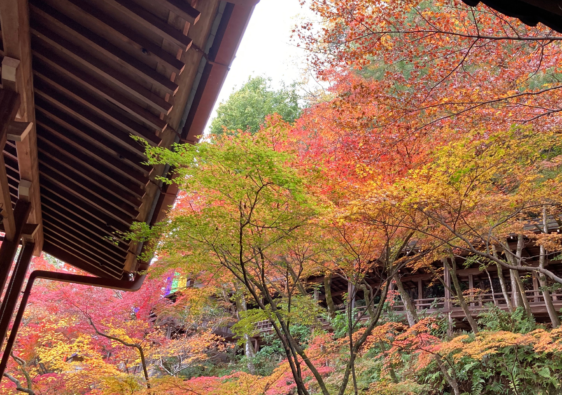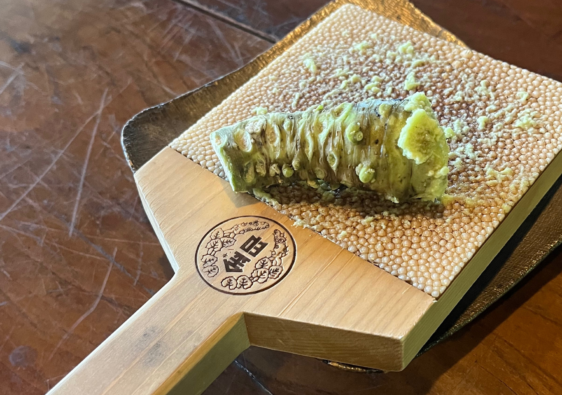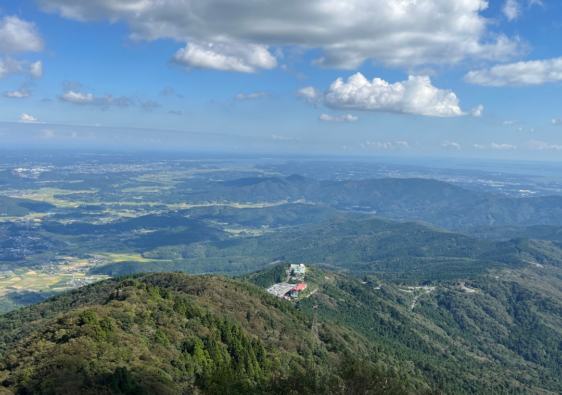I visited Mt. Nokogiri in May to experience the amazing scenery. This mountain is about two hours away from Tokyo by train, but it’s definitely worth a visit. I share the Mt. Nokogiriyama hiking story.

What is the Mt. Nokogiriyama?
Nokogiriyama is a low mountain with an altitude of 329m at the Boso Peninsula in Chiba Prefecture, which is selected as one of the 100 low mountains, and is about the height of Tokyo Tower. Because there is nothing to block the surroundings, the scenery is a mountain that has been selected as one of the 100 views of Mt. Fuji in Kanto.

At the Nihon-ji Temple near the summit, there are photo spots overlooking the sheer cliffs called “Japan’s Biggest Great Buddha”, “Hyakushaku Kannon” and “Jigoku Nozoki”.
On the course, you can see the remains of a stone quarry that has been in operation since the late Edo period. These industrial heritages have been left as they were, and you can not only feel what it was like back then, but the moss-covered forest makes you feel as if you have wandered into the world of Studio Ghibli.

How to visit
From Tokyo, you can go by train, ferry, car, highway bus, etc.
In the case of trains, the “Limited Express Sazanami” runs from Shinjuku to Hamakanaya, so you can arrive in about two hours without changing trains.
If you take a ferry, it takes about 40 minutes from Kumihama in Tokyo to Hamakanaya Port, and after a short walk beyond Hamakanaya Station, you will find the trailhead.
See here for directions to Mt. Nokogiri.
This time, we took the train to Hamakanaya Station, followed by the Sharikido to the top of the mountain via an observatory where you can see the round earth. From the stone quarry, I selected the course that goes through Iwabutai, peeks into hell at Nihon-ji Temple, sees Japan’s largest Buddha statue, and descends to Hota.

You can also climb Mt. Nokogiri by ropeway, but it may stop depending on the weather, so be sure to check the website on the day.
Hiking Course
When you arrive at the trailhead junction from Hamakanaya Station, you will be divided into the Fureai-no-michi course and the Shariki-michi course. The course is divided into three.
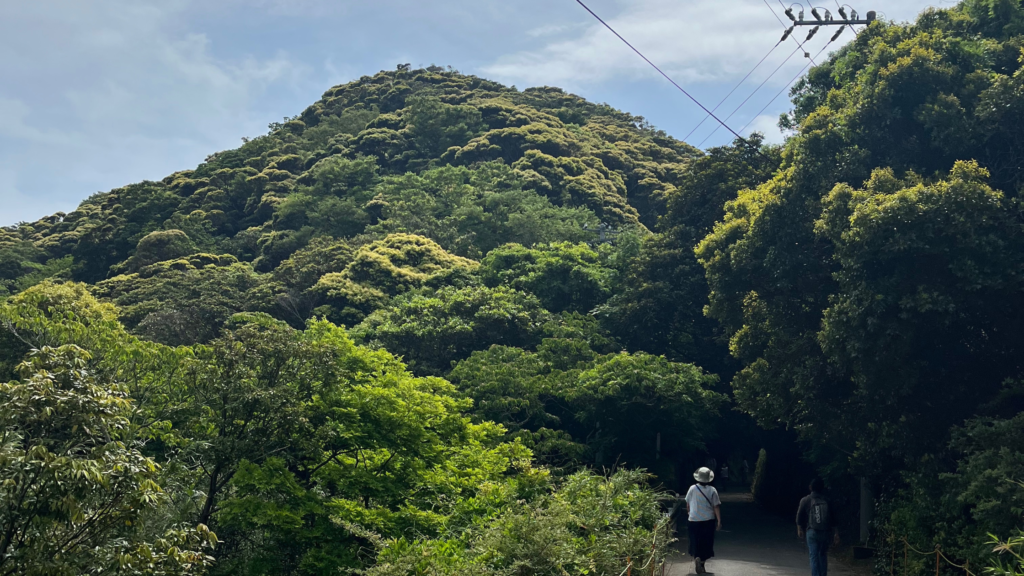
1.For beginners, the “Quick Jigoku Peeping Sightseeing Course 1.9 km, 60 minutes.”
2.For beginners and intermediate level “Industrial Heritage Tour Course 2.6 km, 90 minutes”
3.For intermediate and advanced climbers “Mt. Nokogiri Climber Course 3.9 km, 150 minutes”
Course 1 involves climbing about 500 steps first, so please do your best.
Click here for details of each course.
We selected course No.3.
In the olden days, women carried quarried stones back and forth three times a day.
You can enjoy the beautiful scenery along the way. The stairs are different here and there, so I’m a little out of breath, but I’m going while resting.


At the next fork, the trail splits into Nihon-ji Temple and the summit.
This time, we will aim for the “observation deck where the earth looks round” and the “mountain summit”. To get to the observatory, you have to go up the stairs made on a fairly steep slope. Hold on to the handrails so you don’t fall down.
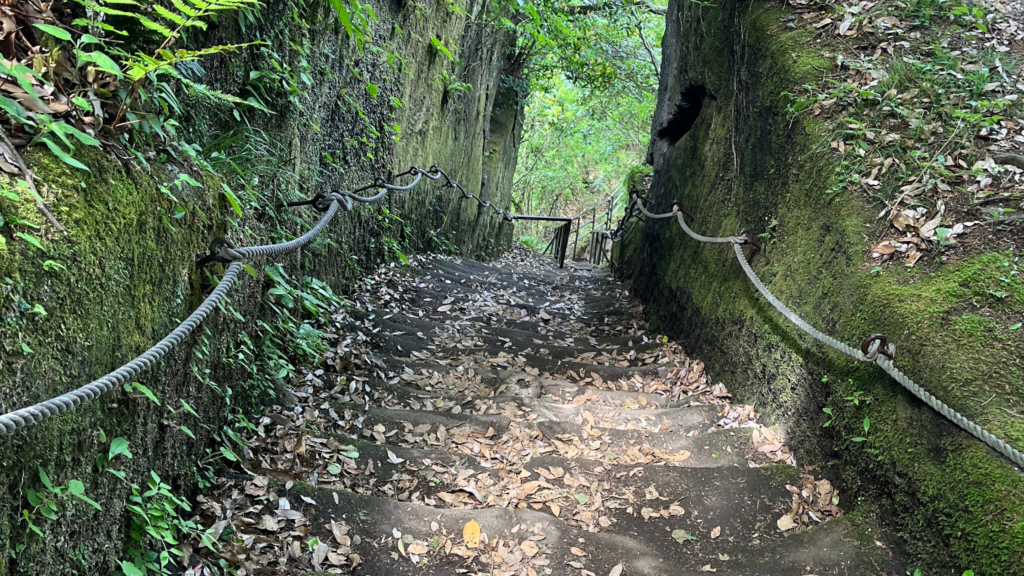
When you finally reach the top, you will reach the observatory where you can see the earth in a round shape. The scenery is indeed wonderful!

From the top of the mountain, we will head to Nihon-ji Temple. Along the way, you will pass through quarries and rock stages. It is exciting to see industrial heritage here.

From the Edo period to the Meiji era, it is deeply moving to think that the stones were really carried by human hands from here.

From here, cross the wall of Laputa and head to the Japanese temple.
After climbing the stone steps, you will arrive at the north exit of Nihon-ji Temple. When you pay the entrance fee and go inside, the first thing that surprises you is Hyakushaku Kannon. My height is 156 cm, so can you tell the difference in size?
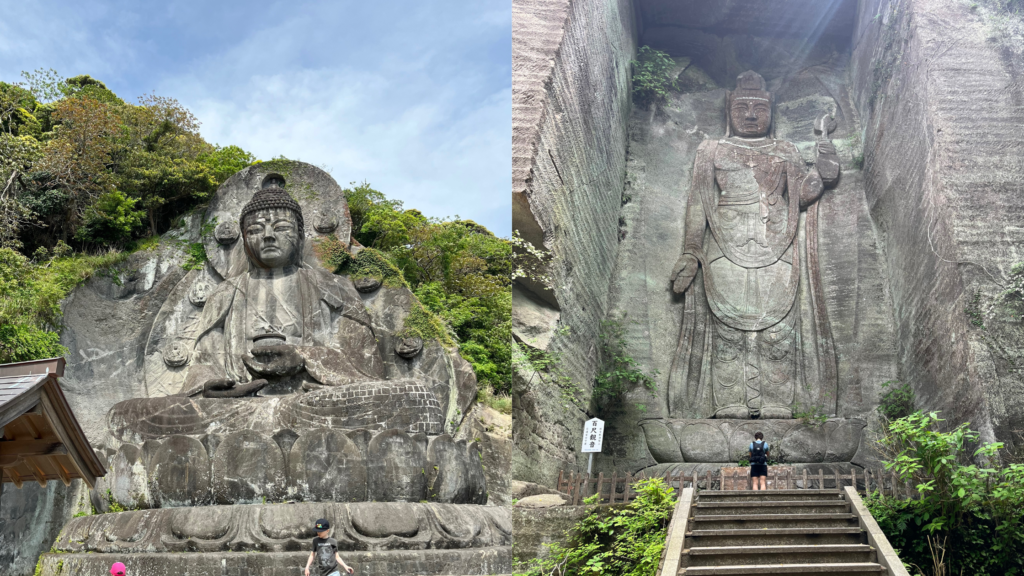
There was a little line for “Jigoku Nozoki”, but soon it was my turn and I looked down. It’s quite high, but if you climb all the way up here, please try going to the tip. It’s safe because there is a fence.
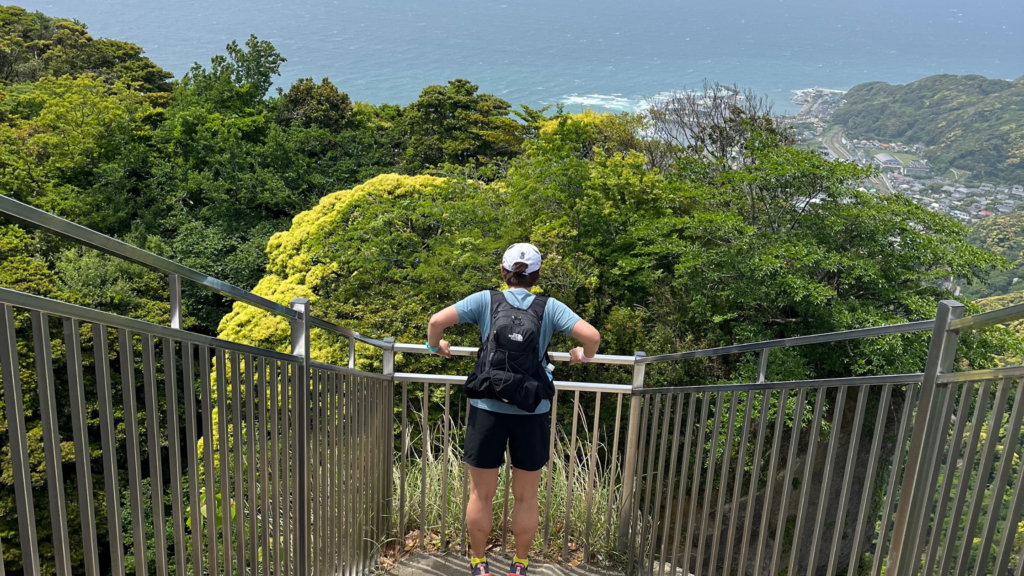
Well, all in all, enjoy Mt. Nokogiri and descend. I would like to get off the ropeway and walk to Hamakanaya in 8 minutes, but since the ropeway is stopped, I will head to Hota Station through the approach to the temple.
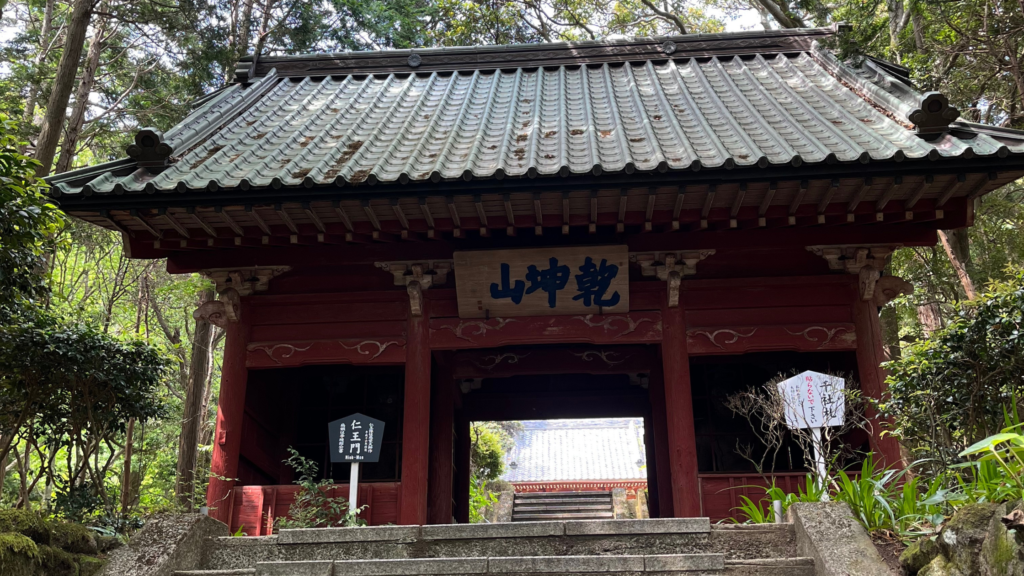
The approach was well maintained, so it was very easy to go down the mountain.
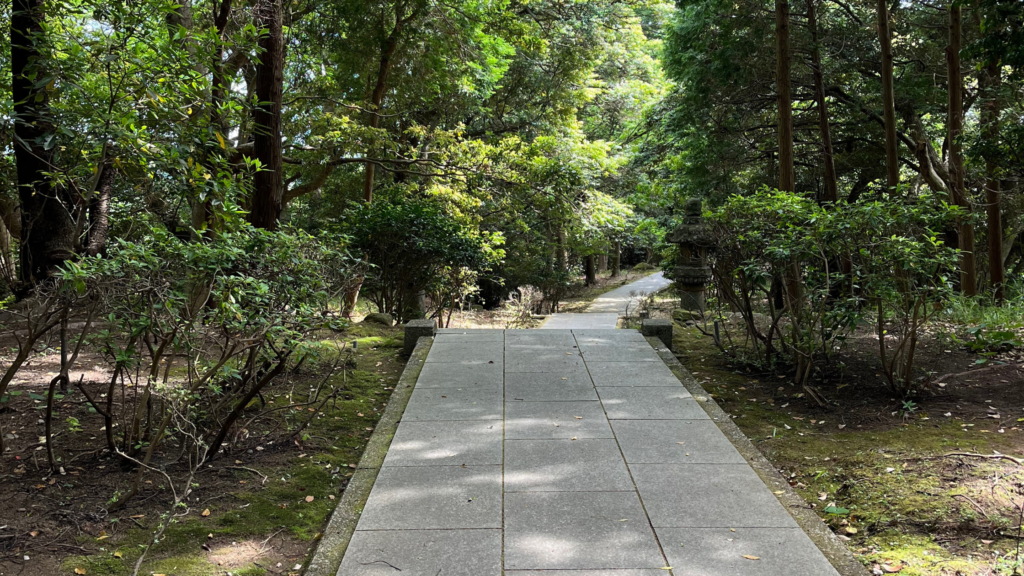
When you go down the mountain, you will reach a place where you can see the railroad tracks by the road, so it will take 20 minutes to walk to Hota Station from here.
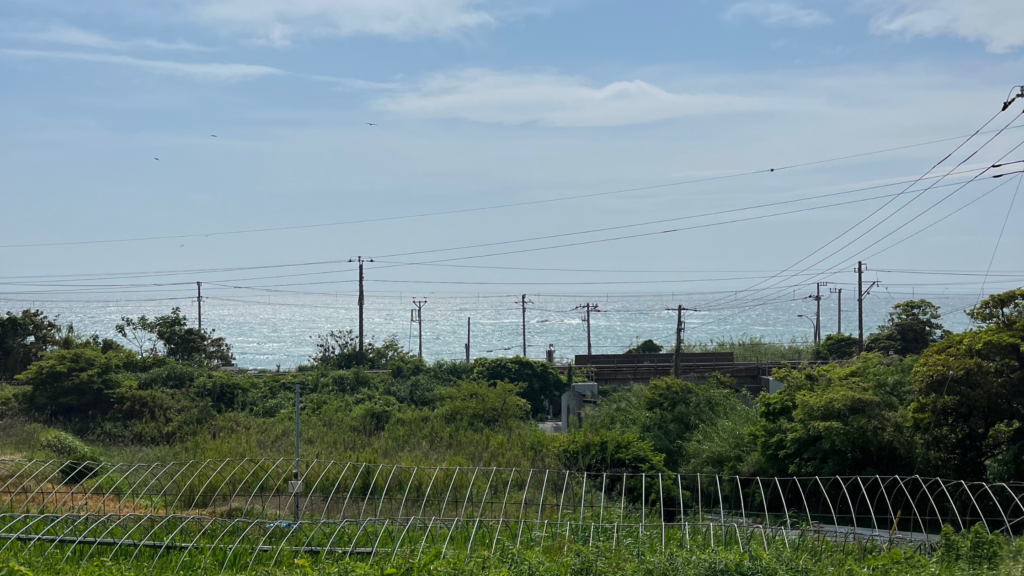
Summary
2 hours by train to Hamakanaya Station. It took about 4 hours on the “Mountaineer Course”, slowly going around the car power road, the summit, Nihonji Temple, and the roadside station. Overall, there are many things to see, and the mountain has a relaxing atmosphere, so it was a fun course to take a lunch and take a rest.
If you wanted to see the video, please click here.


